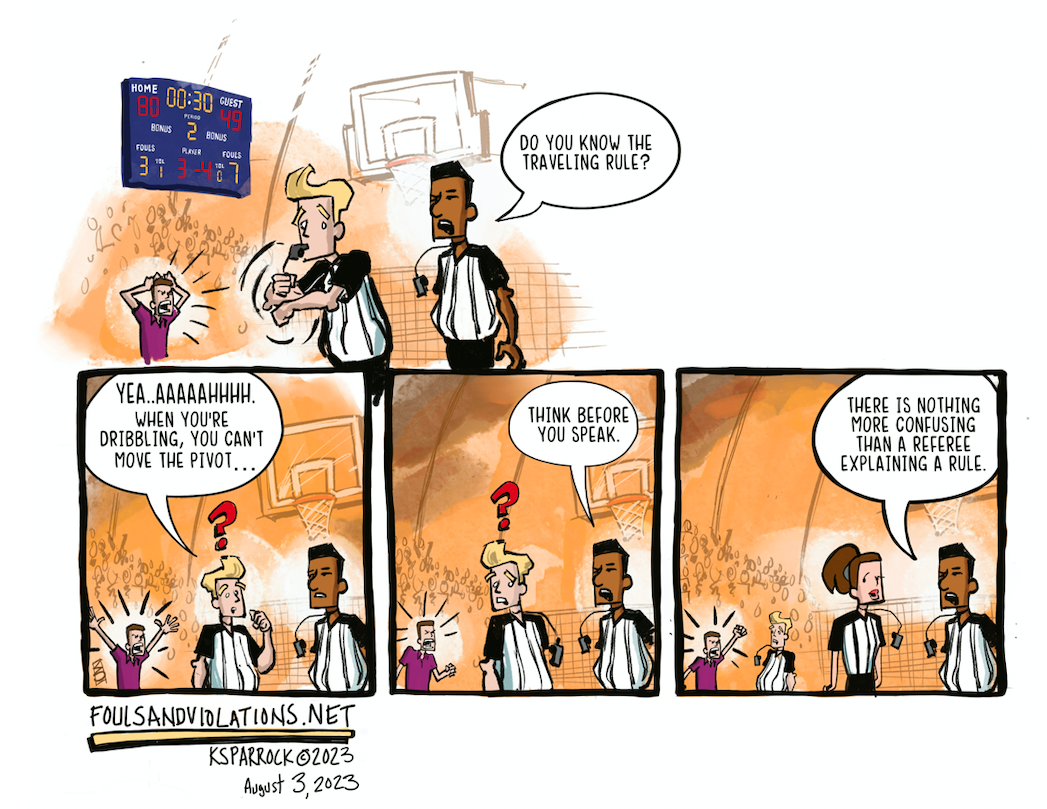Hey Ref, do you really know the traveling rule?
It's not uncommon for referees to have a solid understanding of the traveling rule, given their training and experience in officiating basketball games. However, like any aspect of sports officiating, interpreting rules in real-time game situations can still be challenging.
While most referees have a good grasp of the traveling rule, there are a few reasons why disagreements or controversies can still arise:
Interpretation differences: The traveling rule has some level of interpretation involved, especially when it comes to specific movements, gather steps, or pivot foot positioning.
Speed of the game: Due to the pace of play, an official may miss a minor violation or misinterpret a player's footwork.
Positioning and perspective: Referees need to position themselves optimally to have the best view of plays on the court.
Human error: Despite their best efforts, referees can make errors in judgment, especially in high-pressure situations.
Player deception: Skilled players may try to deceive referees to gain an advantage, making it more challenging for officials to see violations.
In response to these challenges, officiating crews often work as a team, communicating with each other to ensure the best possible coverage of the court and minimize errors. Post-game reviews and feedback also help referees identify areas for improvement and enhance their officiating skills.


